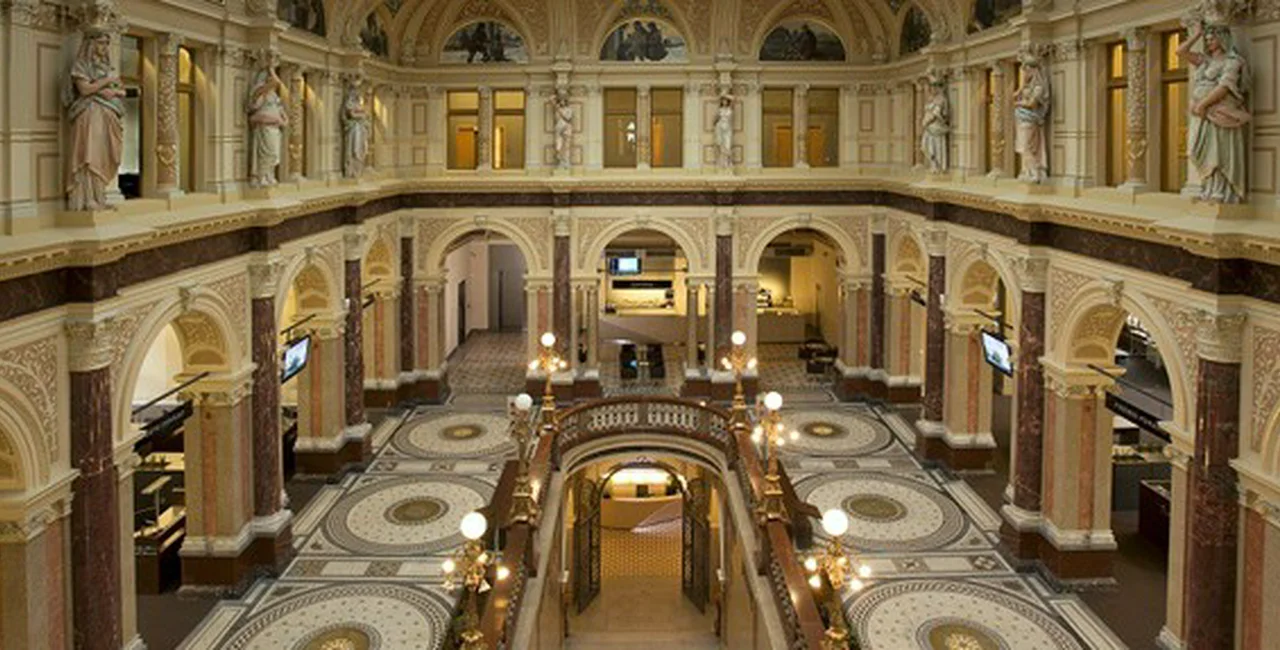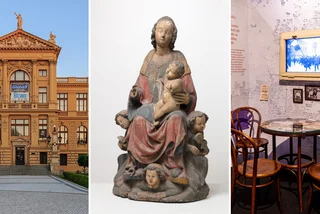Every day, thousands of people, tourists and locals alike, follow the very busy route between Old Town Square and Wenceslas Square. On the way, they pass the imposing, honey-colored Česká spořitelna bank at Rytířská 29 without giving it much thought. Yet it has a wonderful interior and an intriguingly schizophrenic history.
Although the building is a relative newcomer by Prague Old Town standards, the story of the site it occupies stretches back much further. In the Middle Ages, clothing merchants sold their wares at the site, which in 1732 was turned into a theater; performances were held until 1782. In 1890, it was decided to turn the space into a bank, and a competition was held to build the Prague Savings Bank.
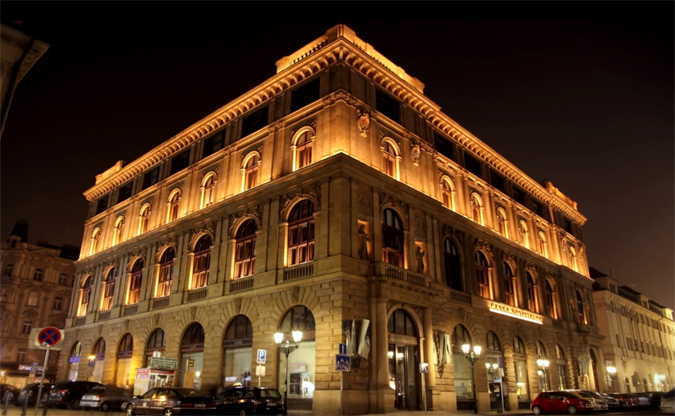
Expat Center Building at Rytířská 29
Architects Osvald Polívka and Antonín Wiehl were commissioned to design the building, which was constructed between 1891 and 1894. The result was grand Neo-Renaissance style that wouldn’t look out of place in an Italian city, and reflects the historicism and commercial confidence of the late 19th century. It therefore contrasts markedly with its neighbors in terms of size and architectural style.
Although the exterior is noteworthy, the interior, which features work by Bohuslav Schnirch, is even more grandiose. Visitors pass through an impressive entrance hall and then turn left up a striking, quite narrow staircase with high walls on either side, creating a tunnel-like effect. The impact is heightened by the black iron gates at the bottom of the staircase, and the relative length of the ascent.
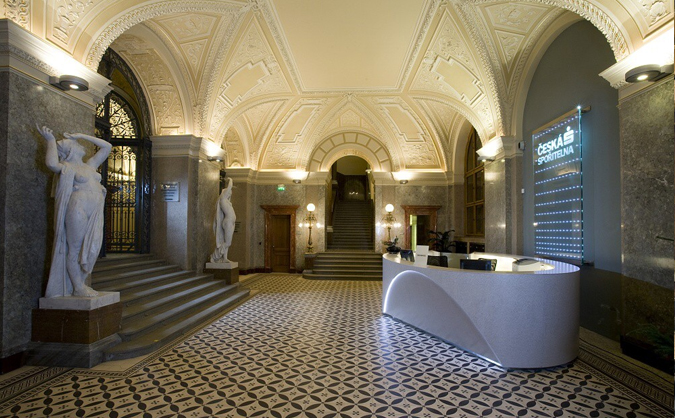
Newly reconstructed lobby of Expat Center
As customers reach the top, they emerge in an elegant opulent lobby surrounded on four sides by arcades, with polished red granite pillars and pale brown and gold paintwork. Above the arcades extends another, richly decorated story, with double windows above the semi-circular arches and a sequence of larger than life figures attached to the walls and directly above the pillars. The roof begins above the second tier, curving to a flat glass ceiling, with a series of murals in the semi-circular spaces above the double windows.
In 1926, two underground stories were built to house safes, and further structural changes were added in 1931: an extra storey added and a covered bridge linking the bank with Rytířská 31.
The overall impact is very impressive, and makes clients feel tremendously important, which was, presumably, the intention of the architect. But the Prague Savings Bank building hasn’t always been impressing customers because for a several decades it didn’t have any. Or rather, it was frequented by visitors of a different, unwilling variety.
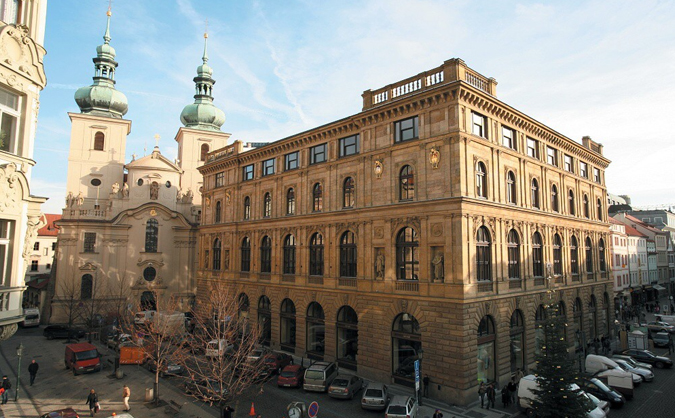
Between 1954 and 1989, the bank, a symbol of capitalism, suffered the humiliation of insensitive remodeling and as a museum dedicated to Klement Gottwald, Czechoslovakia’s first “working-class” president (he was a joiner by trade). But that’s probably his only first. Many would say that the notorious drinker was the country’s worst president.
Gottwald was universally loathed, not least for his unbending, obsequious Stalinism, and he led the Czechoslovak Communist Party from 1929 until the coup of 1948. He faithfully followed his Moscow master, even dying within weeks of Stalin, in 1953, officially from flu, but much more likely from drink.
In 1962 the then Soviet leader Nikita Khrushchev denounced Stalin, and after some pressure from Moscow, the enormous statue of him on Letná came to an ignominious end when it was demolished in a series of explosions. Yet Klement Gottwald’s pudgy visage continued to adorn banknotes in Czechoslovakia, and the Museum in his honor remained in business, swallowing up generations of bored schoolchildren, who regularly got lost among its dusty, tedious displays, as did party delegations from other Eastern Bloc countries.
So it was with some relief that the Museum, like the Stalin statue, soon passed into history, shortly the Velvet Revolution. In 1992 it reverted to its original role and became a major branch of Česká spořitelna, one of the country’s leading financial institutions.
The building underwent an extensive three-stage overhaul between 2005 and 2008, involving repairs and restoration, as well as the creation of modern, simple interiors that complement the exuberance original designs. The work of the architects was nominated for the Stavba roku (Building of the Year) 2009 competition, reaching as far as the second round. The branch is now the Česká spořitelna Expat Center, where you can find the answers to a range of financial questions, in beautifully monumental surroundings.
And if you want to know more about Polívka’s architectural style, which progressed from historicism to Art Nouveau, you’ll find many examples in Prague, notably the Obecní dům (Municipal House) and the Topičův dům (Topič House) on Národní třída.
Expat Center Website: https://www.expats.cz/ceskasporitelna/
Related articles












 Reading time: 4 minutes
Reading time: 4 minutes 